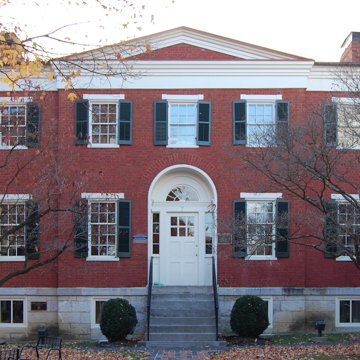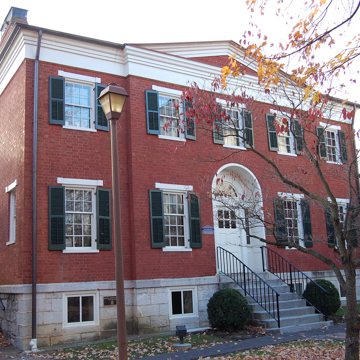Walter, a nationally prominent Philadelphia architect, was asked to design the county's jail. He submitted a plan, and construction began the following year. The center section of the elegantly proportioned, brick, Federal building breaks forward to form a pediment before a low-hipped roof and is further accented by a round-arched doorway bearing a delicate fanlight, thus creating a domestic appearance appropriate since this section was the jailor's house. A stone section at the rear held the cells, which was extended in 1923. The building served as the county jail until 1989. By then it did not meet contemporary standards for housing inmates and in that year the county completed a new jail. The old jail served as the national headquarters of the Kappa Alpha Fraternity from 1990 to 2003, when it was sold back to the county. They sold it again in 2007 and it now serves as law offices.
You are here
Old Rockbridge County Jail
If SAH Archipedia has been useful to you, please consider supporting it.
SAH Archipedia tells the story of the United States through its buildings, landscapes, and cities. This freely available resource empowers the public with authoritative knowledge that deepens their understanding and appreciation of the built environment. But the Society of Architectural Historians, which created SAH Archipedia with University of Virginia Press, needs your support to maintain the high-caliber research, writing, photography, cartography, editing, design, and programming that make SAH Archipedia a trusted online resource available to all who value the history of place, heritage tourism, and learning.


















